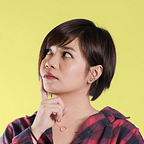Making Note-taking Easier During A Usability Test
A neat way to organize observations and weed out unrelated ones
I see that you’re looking for a way to up your note-taking game. Well you’re in the right place.
This method works well with solo and group note-taking. I learned this from our UX researcher (Hi, Sam!) and since then, have been using it in all of my sessions. Of course, you can tweak it when needed. There are no hard rules here 😎
Note: I recommend presenting a slide deck that’s easier to visually digest paired with this document for reference and thorough reading.
The document structure
Your document will have 3 sheets each with their own purpose. Findings is where the summarized answers to the research questions live. Observations is where you group observations and assign them to participants. And lastly, Raw notes, as its name suggests, is where you can go crazy with other note-takers.
Raw notes
This space is useful if you’re taking notes with other people since you can type simultaneously without having to care if someone else wrote down the same thing. Take whatever cell is free and start typing! If you’re doing solo but prefer to jot down everything first then organize, use this. Otherwise, feel free to use Observations right away if you’re comfortable of writing and organizing at the same time.
Observations
Groups things into 4 categories: Successes, Challenges, Limits, and Out-of-scope challenges— then assign them to participant/s who experienced the same. From here, you should see recurring patterns.
- Successes with design: the user reached the intended goal/s
- Challenges with design: the user had a hard time understanding a piece of information or performing a task
- Limits of the prototype: related action or information the user wanted to do or know about but is neither part of the design prototype nor project scope.
- Out-of-scope challenges: indirectly related to the project, but a problem that your team might be responsible for. Even though an outlier, this helps identify possible edge cases and other features that may need priority.
Findings
Now that you have your key highlights, it’s time to summarize your findings and answer your research questions. Some observations may not be initially included in your research plan, but worth bringing up to the team. Put them under Other findings (usually an alternative solution or a common use case you learned).
Bonus: Comment for more context
Some observations are similar in theme but slightly different due to a minor factor. Some observations may be debatable that it’s best to add a timestamp referencing a part of the recorded video. As long as you feel the need to add more context, use the comment tool.
And we’re done! What do you think, how is this framework similar to what you are using now? How would you tweak this to fit your specific needs? Let’s hear your thoughts below 👇
